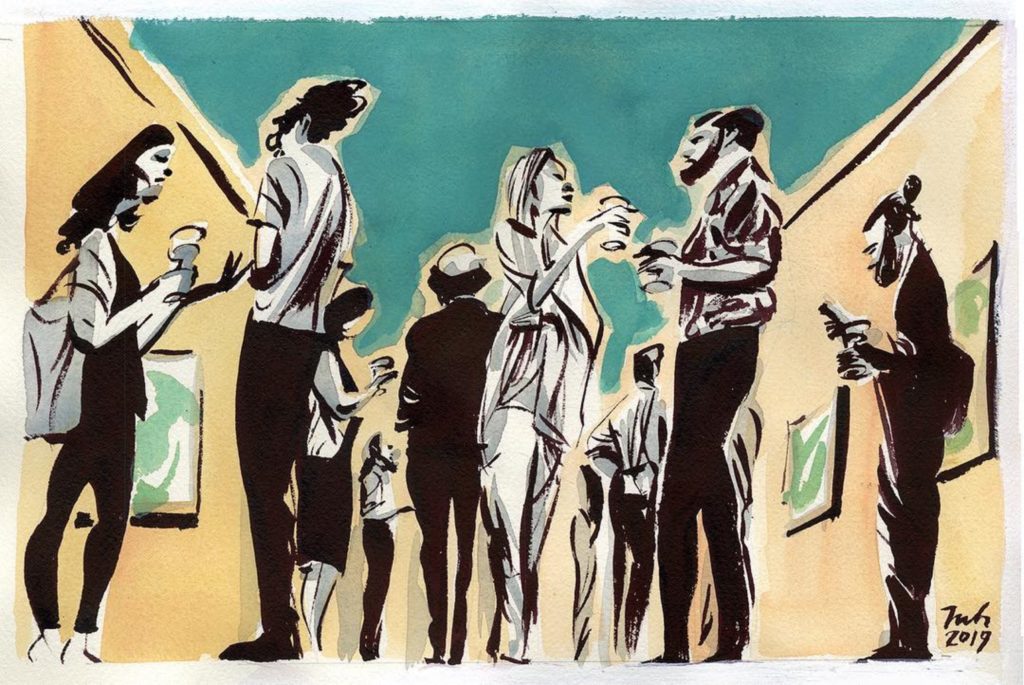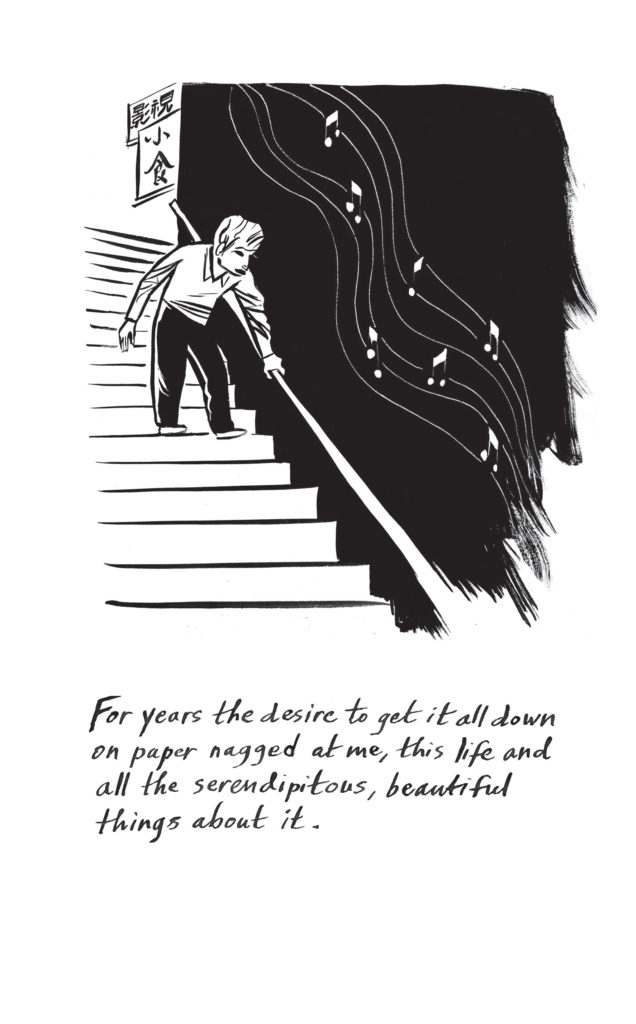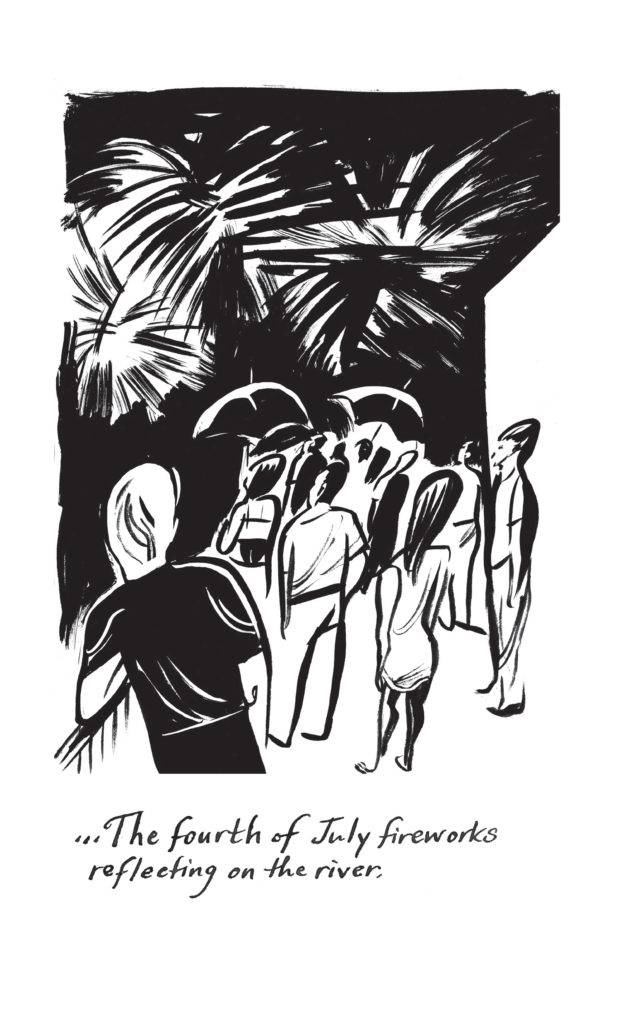How do you capture the essence of a multi-faceted place like New York?
Photographer Helen Levitt took her camera to the city’s poorer neighborhoods. In one of her best-known photographs, shot in 1945, four East Harlem girls watch soap bubbles drift across a desolate street. It’s a fleeting moment. While the ephemeral bubbles float, there is the everlasting hope and magic of New York, the city where everything seems possible.
Documentary filmmaker D.A. Pennebaker, in his 1953 “Daybreak Express,” revealed mid-century Manhattan through a rush of images from a Third Avenue train. Propelled by the rhythm of Duke Ellington’s music, Pennebaker’s six minute short explores the large, unfathomable city by going small, capturing its everyday details and rapidly-passing scenes to find authenticity and beauty.
In this century, artists continue their quest to capture the pulse of New York.
Some of the most creative renderings of the city’s people and pockets are the original artworks — satirical, poignant and whimsical — on the cover of its iconic publication, The New Yorker, first published in 1925.
To attain the cover of The New Yorker is a mighty achievement for an illustrator and one that Marcellus Hall, a New York resident for 25 years, has accomplished five times. His work also has appeared in The Wall Street Journal, The Atlantic and Time. A selection of his artwork — sketches, drawings and watercolors — is currently being shown and sold at Sonoma Academy’s art gallery in Santa Rosa (Jan. 7 – Jan. 30).
Hall’s illustrations, like Levitt’s bubbles and Pennebaker’s “Daybreak Express,” offer glimpses of ordinary people going about their lives in New York City: crowds at a park on a summer’s day, young people sipping wine at an art gallery, ice skaters at Rockefeller Center, a homeless couple asleep on the street. His subjects, diverse as the city itself, share one thing: they hold their smartphones tight.
While cellphones have changed the ways in which people interact in public since the days of Levitt and Pennebaker (American photographer Joel Meyerowitz said they “killed the sexiness of the street”), Hall continues to be drawn to the more human aspects of the urban experience.
“I think the flux of the personal and universal that exists in cities is what attracts me,” the illustrator said. “Each person embodies a thousand stories. Sometimes I marvel at the millions of faces in New York and I’m desperate to chronicle or preserve them on paper.”
It’s no coincidence then that Hall’s exhibition at Sonoma Academy feels like a collection of vignettes — if not a thousand or a million, then enough to transport you across the continent.
Arrayed on the gallery’s walls, black and white sketches depict everyday scenes on street corners and subways, in restaurants, parks and pedestrian underpasses. Two recent New Yorker covers show a modern Lower East Side and a humorous take on the urban fascination with bicycles. A series of watercolors conjure artistic renderings of Bill Cunningham’s fashion photography.
On a table in the gallery, you’ll find still another portal to New York: a copy of Hall’s recently published graphic novel “Kaleidoscope City.”
“I wanted to get down on paper something poetic that might capture the beauty and pace of my New York experience,” Hall said about his book. “I’ve never felt comfortable with the panel structure of comics, so I employed the Japanese concept of yohaku no bi (the aesthetics of empty space).”
By using a poetically-concise prose style, combined with etching-like minimalist illustrations, “Kaleidoscope City” takes the reader on a journey through the metropolis. The graphic novel’s protagonist, a young artist, wanders the streets of New York carrying only a broken heart and a sketchbook. He finds inspiration in unexpected places and tells his story through a series of postcards depicting “far-flung neighborhoods … fleeting glimpses of a mysterious woman.”
An excerpt reads, “When I first moved to the city I was intoxicated with possibility … the blank page, the unseen future, the unwritten chapters and the endless possibility of chance encounters that presented itself in the shifting river of faces on every street corner. For years, the desire to get it all down on paper nagged at me, this life and all the serendipitous, beautiful things about it … The Fourth of July fireworks reflecting on the river … The horse head on Market Street … That beautiful Friday night feeling. That mix of hopefulness and expectation that comes when you’re rushing off to somewhere. The streets are electric with energy and your heart is beating with the promise of a perfect night … and romance.”
Writer E.B. White likened New York to a poem “whose magic is comprehensible to millions but whose full meaning will always remain elusive.”
While it may be impossible to capture the essence of a city whose only fixed quality is its constant metamorphosis, the exhibition at Sonoma Academy shows that sometimes it takes only an image, or a short sequence of them, to transport the viewer through time and space to the heart of New York City.
Marcellus Hall at Sonoma Academy, Jan. 7-30, 2020, Mon – Fri, 8 a.m. – 4 p.m., 2500 Farmers Ln, Santa Rosa. Free (sign in at the school reception). Show curated by Hillary Younglove. Follow Marcellus Hall on Instagram, @marcellus_hall.
Upcoming Shows at Sonoma Academy
Feb 1-Feb 27: Susan Stover, susanstover.com.
Feb 28-March 29: Hayley Samantha Jensen, hayleysamanthajensen.com.
May/June: Hillary Younglove: “Passages.” hillaryyounglove.com.






































